Floating houses
SHARE POST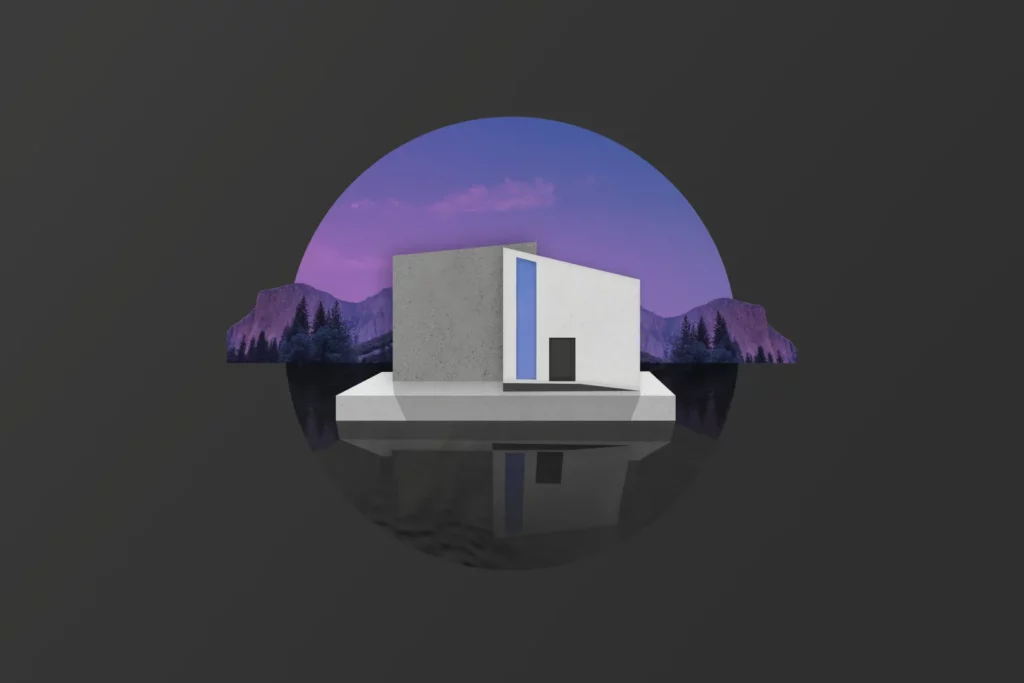
In today’s ultra-fast world of architecture and construction, floating houses have emerged as a fascinating concept that combines innovation, sustainability, and the calmness of waterfront living.
With the ability to seamlessly integrate with natural surroundings and adapt to changing water levels, these floating homes offer a uniquely sustainable living experience. In this blog post, we will dive into the world of floating houses, explore their advantages, construction process, and design options, and answer how to get the perfect home.
And, if you’re an architecture studio looking to find the best-of-the-best floating house experts, we’ll do you one better! But you’ll have to wait until the end for that.
Let’s move on!
Floating Houses: The ABCs
Floating houses, water floating houses, or floating homes are architectural marvels designed to rest on water bodies such as lakes, rivers, or coastal areas. They are built on platforms or pontoons that provide buoyancy, allowing the house to float and remain stable. The concept of floating houses has gained popularity due to their numerous benefits, including:
Unique Living Experience
Imagine waking up to a gentle sway, surrounded by spectacular views of the natural landscape. Floating houses offer an unparalleled living experience that smoothly blends indoor comfort with the beauty of the great outdoors. Whether you’re looking for a quiet getaway or a vibrant waterfront community, floating houses provide an opportunity to create a one-of-a-kind living space.
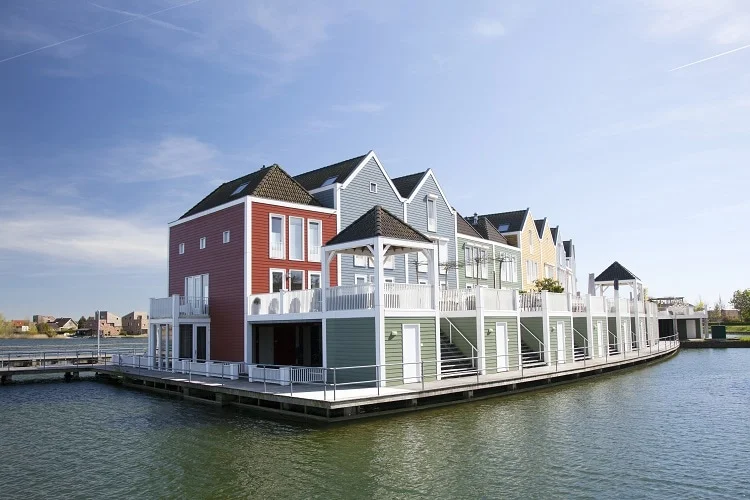
Flexibility and Adaptability
One of the key advantages of floating houses is their ability to adapt to changing water levels. Unlike traditional homes, floating houses rise and fall with water, ensuring structural integrity and minimizing the risk of damage. This adaptability makes floating houses an excellent choice for areas prone to flooding or regions with fluctuating water levels.
Sustainability and Other Environmental Benefits
Floating houses are inherently sustainable. The construction process typically involves eco-friendly materials and energy-efficient design principles. Also, these homes have a smaller ecological footprint since they don’t require extensive land excavation. By embracing the natural surroundings and using sustainable technologies, floating houses contribute to a greener and more environmentally conscious way of living.
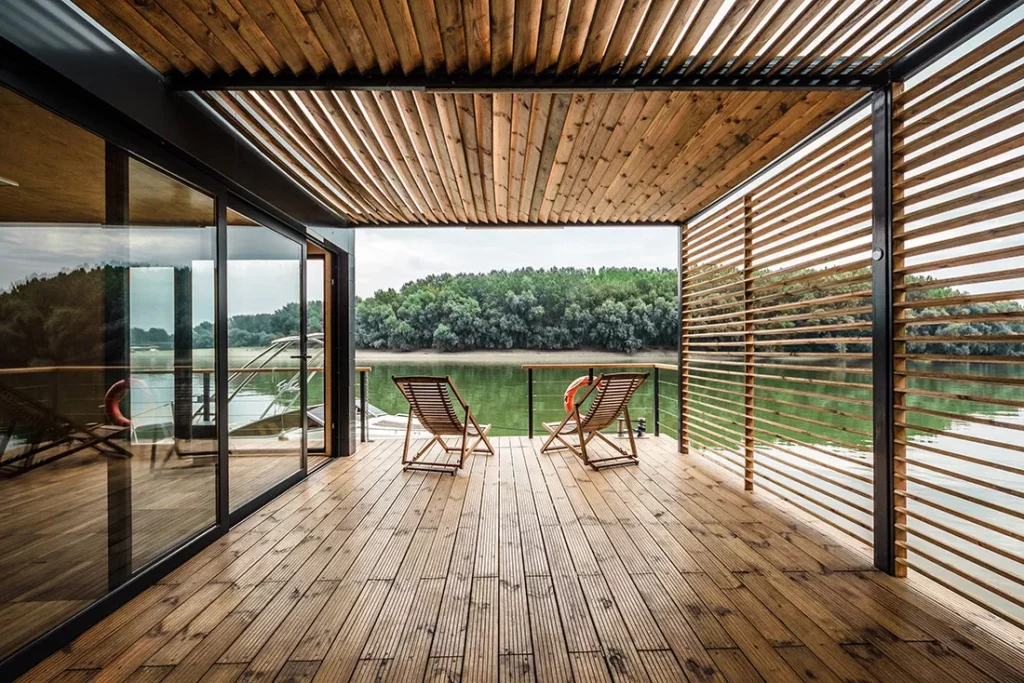
Design and Construction of Floating Houses
Designing and constructing a floating house requires careful planning and collaboration with architectural professionals. Here’s an overview of the process:
Sustainability and Other Environmental Benefits
The journey begins with conceptualizing your dream floating house. To this end, accounting for location, size, style, and desired features is crucial. Then, you must conduct a feasibility study to assess the site’s suitability, including water depth, stability, and access to utilities. Engaging with architectural experts, like those at BetterPros, can provide valuable insights and assistance during this phase.
Engineering and Structural Design
After the conceptual stage, architects and engineers collaborate to develop detailed engineering plans and structural designs. They ensure the house meets all safety requirements, withstands water pressures, and remains stable in many conditions. Advanced computer modeling and simulation techniques are employed to assess the house’s performance and make necessary adjustments.
Construction and Assembly
The construction process of a floating house involves the creation of a sturdy floating platform or pontoons. These platforms serve as the foundation for the structure and provide the necessary buoyancy. High-quality materials, such as steel, concrete, or composite materials, ensure durability and stability. Skilled professionals handle the assembly, carefully integrating the house with the floating platform.
Utilities and Interior Finishing
Once the structural framework is complete, the focus shifts to installing utilities like plumbing, electrical systems, and heating/cooling. Interior finishing work commences, including insulation, wall finishes, flooring, and customizing the space according to your preferences. Design flexibility allows for a wide range of styles, from modern and sleek to rustic and cozy, ensuring your floating house reflects your lifestyle.
Design Options for Floating Houses
When designing a floating house, you can choose to suit your preferences and lifestyle. Here are a few popular design styles:
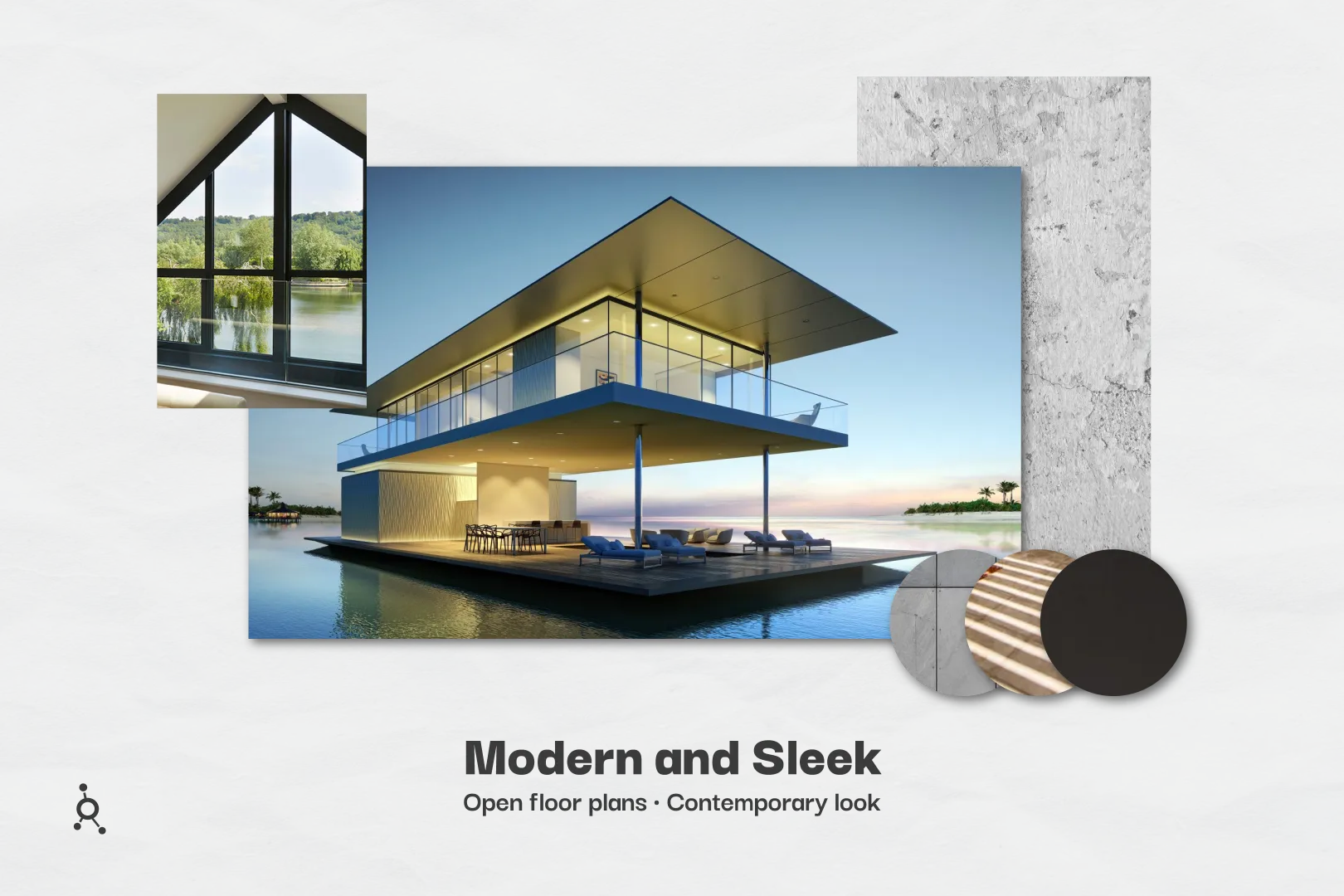
Modern and Sleek
For those who appreciate clean lines and minimalist aesthetics, go with a modern and sleek design! This style often incorporates large windows and open floor plans to maximize natural light and create a sense of spaciousness. Utilizing materials like glass, steel, and concrete can give your floating house a contemporary look.
Rustic and Cozy
Do you prefer a more traditional and cozy atmosphere? A rustic design is a perfect fit! This style embraces natural materials like wood and stone, creating a warm and inviting ambiance. Exposed beams, wooden flooring, and a fireplace can add character and charm to your floating house, making it a cozy retreat.
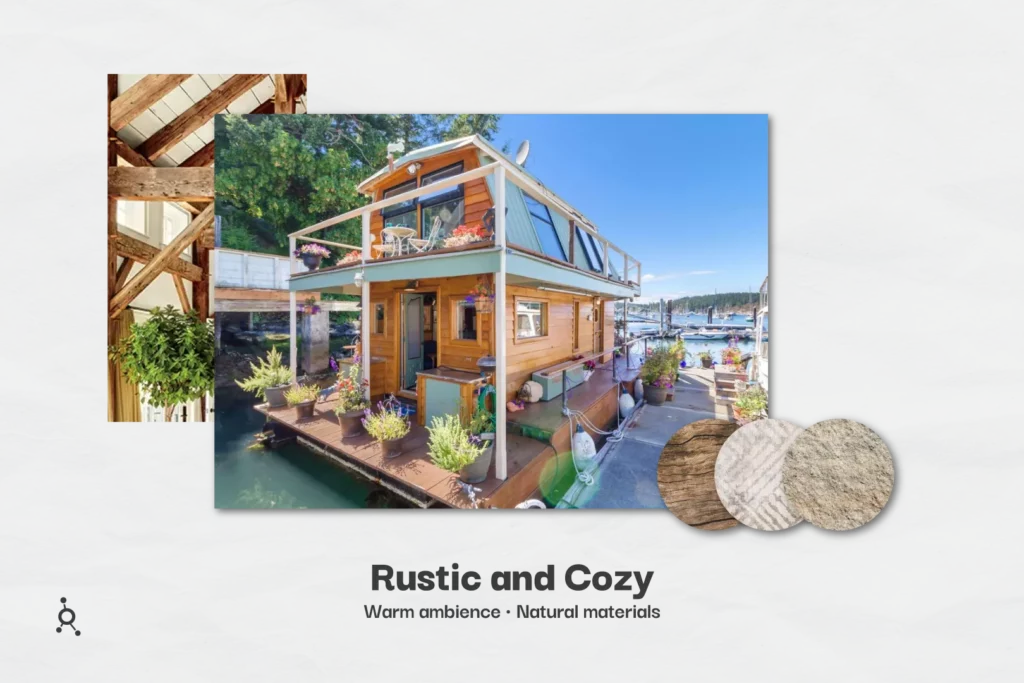
Customization Possibilities
One of the advantages of floating houses is their flexibility in terms of customization. Here are some customization possibilities to consider:
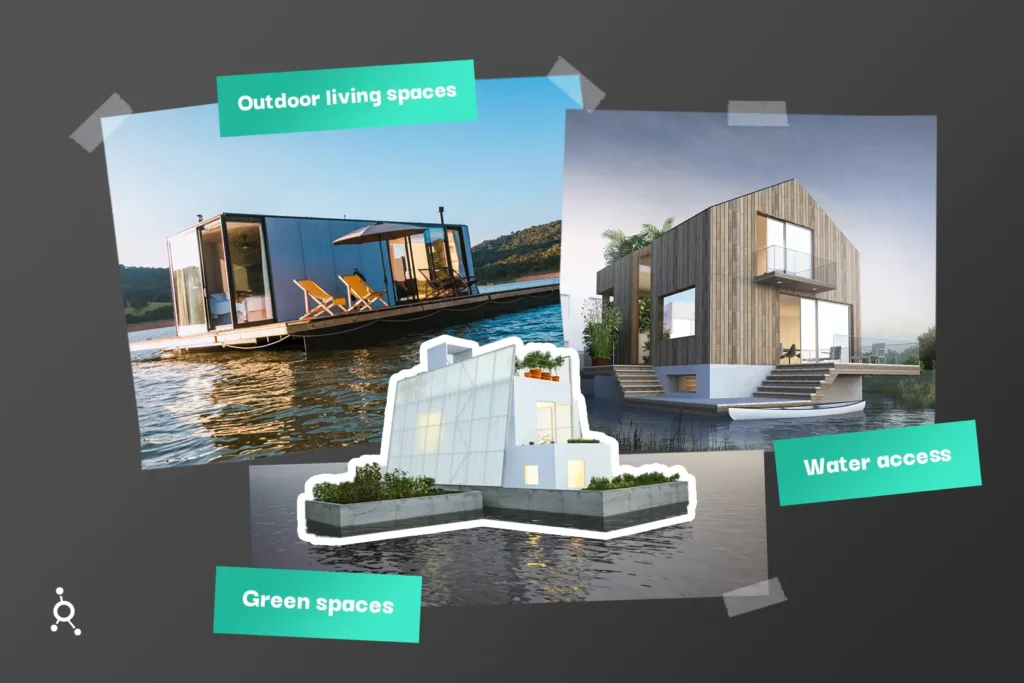
Outdoor Living Spaces
Maximize your enjoyment of the waterfront lifestyle by incorporating outdoor living spaces into your floating house design. Decks, balconies, and rooftop terraces can provide additional areas for relaxation, entertaining guests, and soaking up the stunning views.
Green Spaces and Gardens
Integrating green spaces and gardens into your floating house can enhance the connection with nature. Consider adding floating gardens or vertical planters to bring greenery and a touch of serenity to your living environment. These green spaces can also contribute to the overall sustainability of your floating house.
Integrating green spaces and gardens into your floating house can enhance the connection with nature. Consider adding floating gardens or vertical planters to bring greenery and a touch of serenity to your living environment. These green spaces can also contribute to the overall sustainability of your floating house.
Smart Home Technology
Wholeheartedly embrace the latest advancements in smart home technology to enhance the functionality and convenience of your floating house. From automated lighting and temperature control systems to remote access security systems, these features can make life easier, safer, and more comfortable.
Water Access and Recreation
Make the most of the water location by incorporating water access and recreational features into your floating house. A private dock, boat slip, or even a swim platform can provide opportunities for boating, fishing, swimming, and other water activities right at your doorstep.
BetterPros: the Ideal Partner
If you work closely with architectural professionals, such as those connected through BetterPros, you can explore these design options in detail. They can provide valuable insights, suggest innovative ideas, and help you transform your vision into a well-executed floating house design.
At BetterPros, we specialize in connecting high-end Latin American architectural professionals with global companies. We can assist you in finding the right experts who can turn your dream of a floating house into a reality. Our talent pool of experienced architects, engineers, and 3D modelers has the expertise and skills to deliver exceptional results.

Summing Up:
Floating houses represent a new frontier in architectural design and sustainable living. Their ability to seamlessly integrate with natural surroundings, adapt to changing water levels, and provide a unique and captivating living experience makes them an appealing choice for those seeking a harmonious blend of innovation, sustainability, and waterfront living.
The advantages of floating houses go beyond just the living experience. These architectural innovations are also environmentally friendly and sustainable. With their eco-friendly construction process, energy-efficient materials and design principles, and smaller ecological footprint, floating houses contribute to a greener and more sustainable way of living. By embracing the natural surroundings and utilizing sustainable technologies, you can live harmoniously with the environment while enjoying every comfort of modern living.
Bringing your dream of a floating house to life requires careful planning, collaboration with architectural professionals, and access to top-tier talent. BetterPros, with our talent pool of experienced architects, can assist you in finding the right experts who possess the expertise and skills to deliver exceptional results.
Unlock the potential of floating housing by contacting BetterPros today for a comprehensive consultation.
